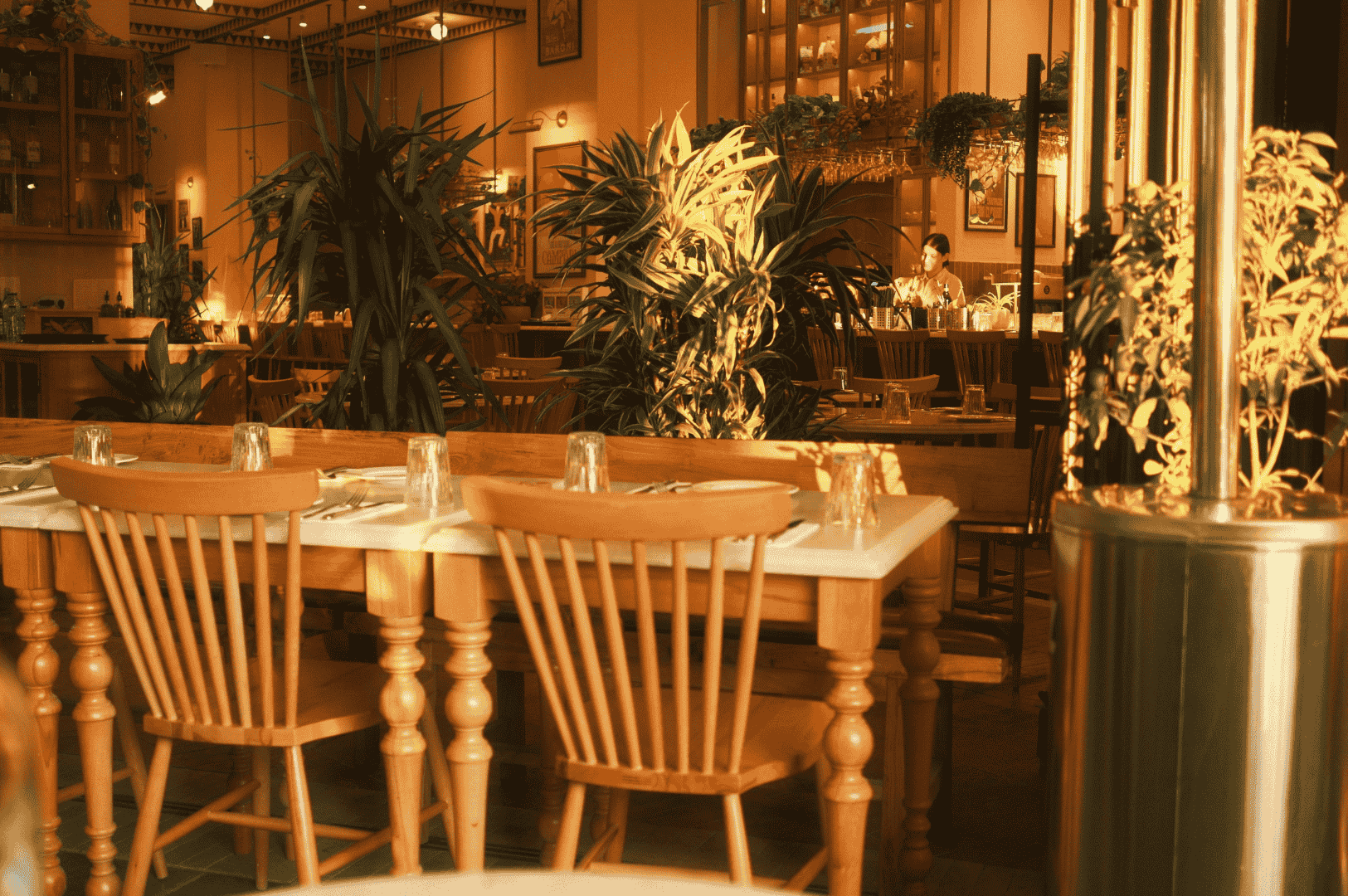Sustainable restaurant design has emerged as a fundamental aspect of the restaurant industry, attracting not only environmentally conscious consumers but also savvy owners seeking to reduce energy usage and operating costs.
The recent surge in sustainable restaurant interest is not just a fleeting trend—studies show that nearly 75% of diners prefer restaurants that implement eco friendly practices, and about 62% are willing to pay more for a dining experience in a sustainable restaurant.
This growing demand underscores a simple truth: sustainability practices can enhance restaurant interior design without sacrificing style or customer experience. Incorporating sustainable materials, maximizing natural light, reducing a restaurant’s carbon footprint, and improving indoor air quality are not only better for the planet—they can lead to significantly lower energy bills and long term sustainability.
In this guide, you’ll discover how to use eco friendly materials, energy efficient appliances, and resourceful strategies to create a space that stands out for both its style and sustainability.
Sustainable Materials by Restaurant Zone
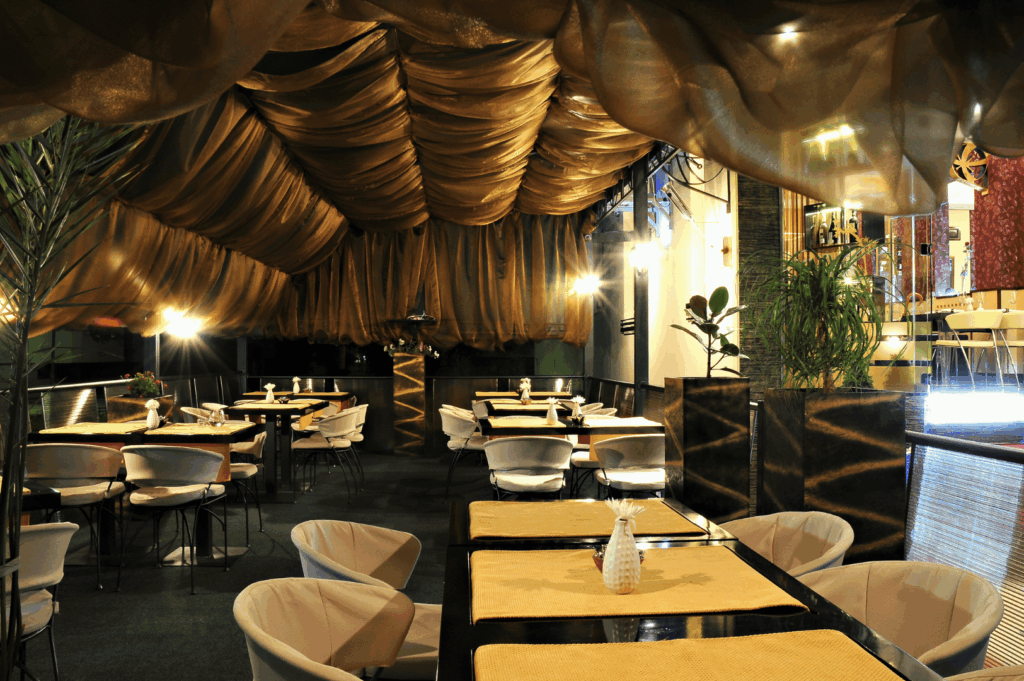
Designing spaces for a more sustainable future means embedding sustainable principles into every part of your restaurant. Let’s explore how sustainable materials and clever design choices can be applied zone by zone.
Dining Area
The dining area is where customer experience meets your restaurant’s sustainability efforts head-on. Each choice—from the chair a customer sits in to the lighting illuminating their meal—has a direct environmental impact.
- Reclaimed Wood: Choosing reclaimed wood for tables, feature walls, or flooring is a sustainable option that infuses natural elements and distinct character into your space. Each piece tells its own story, sourced from historic buildings, wine bottles, or even old railway sleepers. Using reclaimed wood drastically reduces the need for new resources, lowering your restaurant’s carbon footprint and supporting local economies.
- Recycled Materials: Recycled glass and recycled metals can be incorporated as countertops, accent tiles, or decorative features. Their manufacturing process consumes less energy and emits fewer transportation emissions. The result is a beautiful, environmentally friendly restaurant interior with a unique aesthetic.
- Low VOC Paints & Natural Fibers: Low-VOC (volatile organic compounds) and zero-VOC paints protect indoor air quality while offering vibrant style. Upholstery made from natural fibers—organic cotton, hemp, or linen—is both an eco friendly and a stylish choice for banquettes and chairs, blending comfort with responsible design.
- Energy Efficient Lighting: Switch to LED lighting, which consumes up to 80% less energy than incandescent bulbs and has a much longer lifespan. Consider maximizing natural light with large windows or well-placed skylights, which can drastically reduce artificial lighting needs during daytime hours.
- Product Recommendation: Philips Hue smart LED bulbs (about S$70–S$90 each) offer customizable color and lighting levels through your smartphone, balancing mood and efficiency.
- Indoor Plants & Green Walls: Introducing indoor plants and green walls doesn’t just create a stunning dining experience. They improve air quality, enhance well being, and act as a visual statement of your sustainability practices.
Kitchen and Service Areas
The kitchen is the operational core, where sustainability can significantly reduce a restaurant’s energy consumption and waste.
- Energy Efficient Appliances: Opt for ENERGY STAR® certified kitchen equipment. Energy efficient refrigerators, induction stovetops, and convection ovens can drastically reduce energy consumption. An efficient fryer, for instance, can save thousands in energy bills annually.
- Sustainable Countertops: Materials such as PaperStone (made from recycled paper), recycled glass, and locally sourced quartz are durable and minimize environmental impact. By avoiding granite, which often has high transportation emissions, you further reduce your restaurant’s carbon footprint.
- Water-saving Fixtures: Choose low-flow or sensor-activated faucets to reduce water waste.
- Product Recommendation: The T&S Brass B-0107-C Low Flow Pre-Rinse Spray Valve (approx. S$150–S$200) saves water with every dish cycle—an effective step in lowering operating costs.
- Non-Toxic Cleaning Solutions: Eco friendly, plant-based cleaning agents improve indoor air quality and prevent harmful chemicals from entering local water systems. Use refillable pumps for reduced plastic waste.
- Waste Management: Institute a food waste tracking system and create protocols for separating and composting organic waste, recycling glass, metals, and plastics, and rethinking kitchen prep to reduce food waste at the source.
- Maximize Natural Light & Fresh Air: Use skylights or side windows to brighten staff work areas naturally, while ensuring proper air circulation with efficient HVAC systems for healthier, more energy efficient operation.
Bathroom and Utility Spaces
Sustainability is just as vital in your utilitarian spaces, supporting energy efficiency and water conservation goals.
- Water-Efficient Fixtures: Sensor faucets and dual-flush low-flow toilets are proven to significantly lower water usage.
- Recycled Paper Products: Use paper towels and toilet paper with high post-consumer recycled content. Many suppliers now offer bulk pricing to further incentivize this sustainable choice.
- Sustainable Tiles: Choose tiles made from recycled ceramics or glass for splash-prone areas.
- Product Recommendation: Fireclay Tile produces beautiful recycled tiles, starting around S$30 per square foot, perfect for eco friendly, long term sustainability.
- Hand Dryers vs. Paper Towels: Modern hand dryers like the Dyson Airblade minimize energy usage and eliminate the need for disposable paper products, reducing both cost and environmental impact.
Exterior and Landscaping
A restaurant’s sustainability should be reflected on the outside as well as the inside.
Green Walls & Rooftop Gardens: Green walls insulate your building, improve urban air quality, and offer fresh ingredients for the kitchen. Solar panels can also be installed to generate clean energy and power both interior and exterior lighting or kitchen equipment.
Permeable Paving: Rather than traditional concrete, permeable pavers allow rainwater to return to the ground, reducing runoff and supporting local aquifers.
Native Plant Landscaping: Opting for plants native to your area means lower irrigation needs and increased biodiversity. Grow herbs on site to reduce food miles and enhance your food waste loop.
Sustainable Outdoor Furniture: Look for furniture made from recycled plastics or reclaimed wood, and verify certifications such as FSC (Forest Stewardship Council) for responsibly harvested timber.
Product Recommendation: Loll Designs crafts outdoor furniture from 100% recycled plastics; a Lollygagger Lounge Chair is approx. S$700 and built to last.
Implementation Strategies
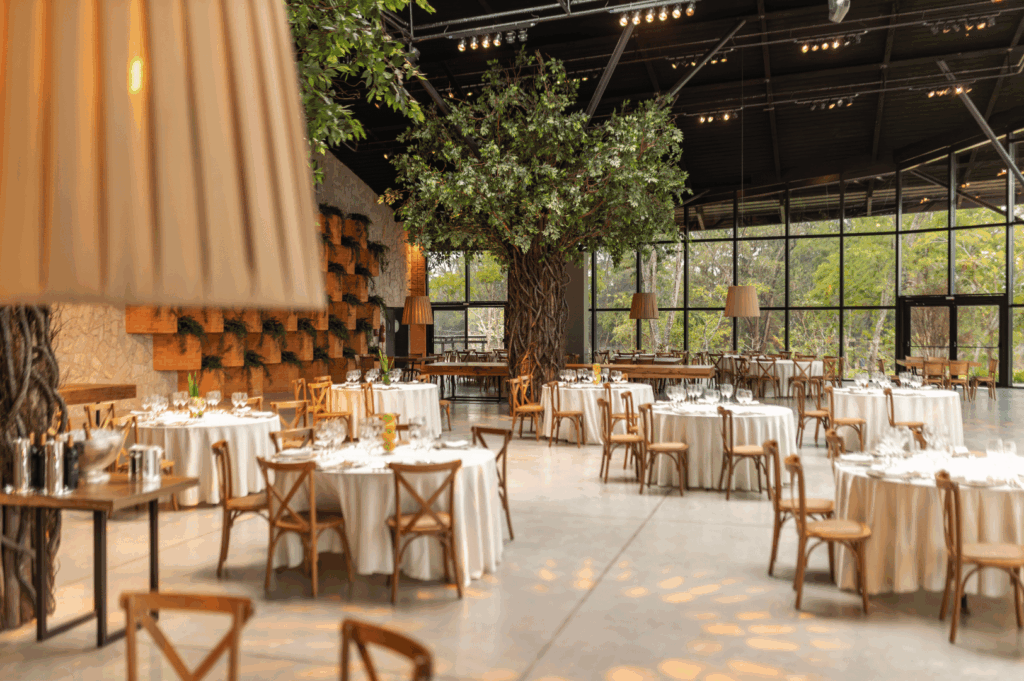
Making your restaurant more sustainable doesn’t have to be daunting. Consider these practical pathways:
- Start Small: Implement eco friendly practices like changing to LED lighting, using low-VOC paint, or adding indoor plants—all low-cost ways to reduce energy and freshen the space.
- Plan for Larger Investments: When planning renovations or new builds, prioritize energy efficient appliances, water saving systems, and sustainable materials for areas with the highest environmental impact.
- Collaborate with Sustainable Experts: Work with architects, interior designers, and suppliers whose sustainability practices are proven. Transparent partnerships can yield creative solutions, from sourcing locally sourced materials to designing spaces that maximize natural light and ventilation.
- Phased Renovations: Approach sustainability in phases based on business cycles and available capital. For example, upgrade lighting and paints first, then tackle eco friendly kitchen equipment and green walls during a slower season.
Style Without Sacrifice
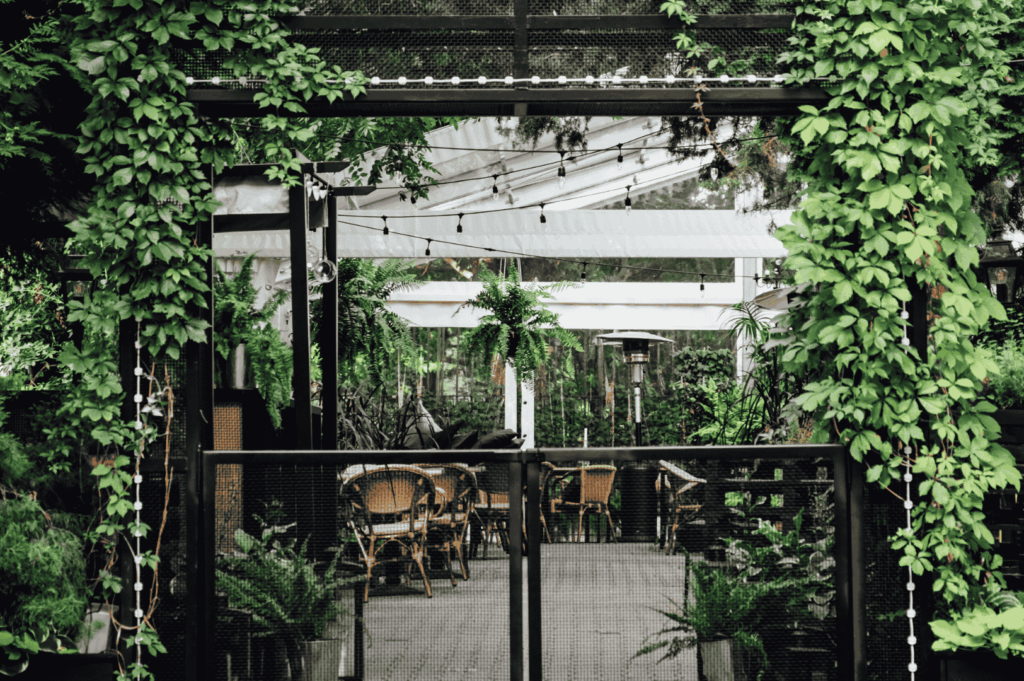
Eco friendly restaurant design can achieve a stunning, memorable aesthetic while advancing sustainability goals.
- Visual Inspiration: Silo in East London made headlines by weaving sustainability into every design detail. The space embraces reclaimed wood, recycled glass, and green walls, showing that sustainable interiors are not just stylish—they elevate the entire dining experience.
- Ambiance Enhancement: Natural light, clean lines, natural materials, and eco friendly decor all enhance mood and comfort. Employing large windows, using wine bottles for partition walls, and showcasing locally sourced art can amplify your restaurant’s sustainability story.
- Brand and Marketing: Sharing your restaurant’s sustainability efforts with guests—be it through menu notes, social media, or interior design—creates differentiation and attracts environmentally conscious consumers. Eco friendliness isn’t just a style statement; it’s a unique selling point in today’s market.
Return on Investment
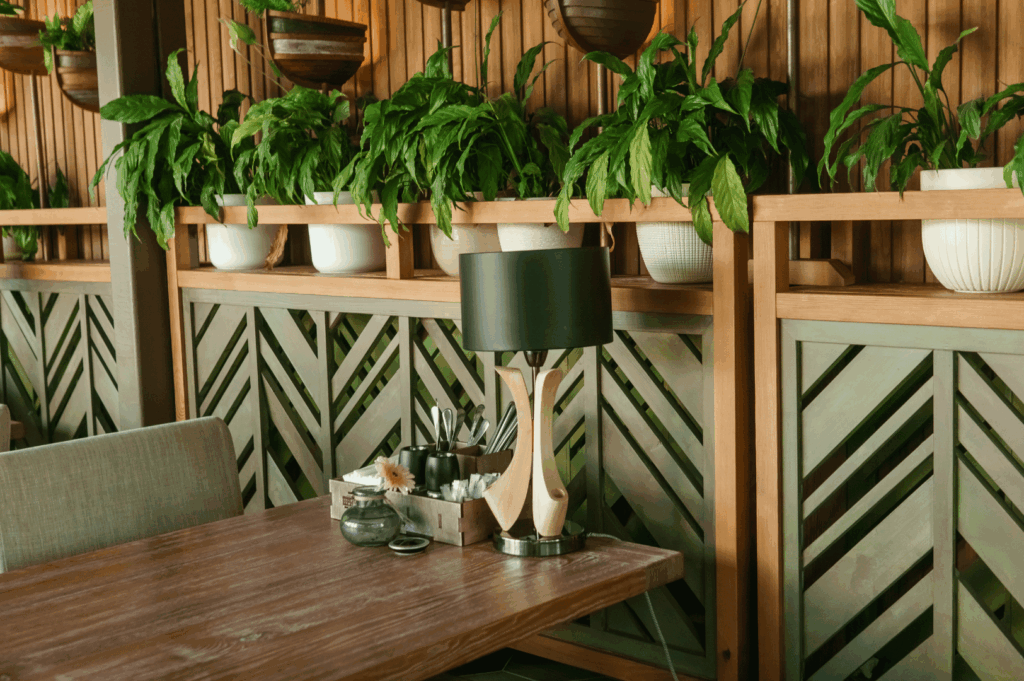
A shift towards sustainable restaurant design is an investment in a more sustainable future—one that often pays substantial dividends.
Energy and Water Savings: Energy efficient lighting, appliances, and water fixtures result in dramatically reduced energy bills. Solar panels, though an upfront cost, often pay for themselves in approximately five years through energy savings.
Waste Reduction: Improved food waste management and the use of recycled materials translate directly to reduced disposal fees and purchasing costs.
Customer Appeal and Loyalty: Eco friendly restaurants attract and retain new guests, especially among younger, sustainability-focused diners. Clear environmental goals can lead to stronger customer relationships and positive word-of-mouth.
Incentives and Rebates: Governments increasingly offer grants, tax incentives, or reduced loan terms for businesses adopting energy efficient appliances, clean energy, and other sustainability practices.
Product Recommendation: Demand-Controlled Kitchen Ventilation (DCKV) systems, like Halton’s innovation (prices vary by kitchen size), can decrease fan energy costs by 50% or more, cutting operating costs for a rapid return on investment.
Resources and Next Steps
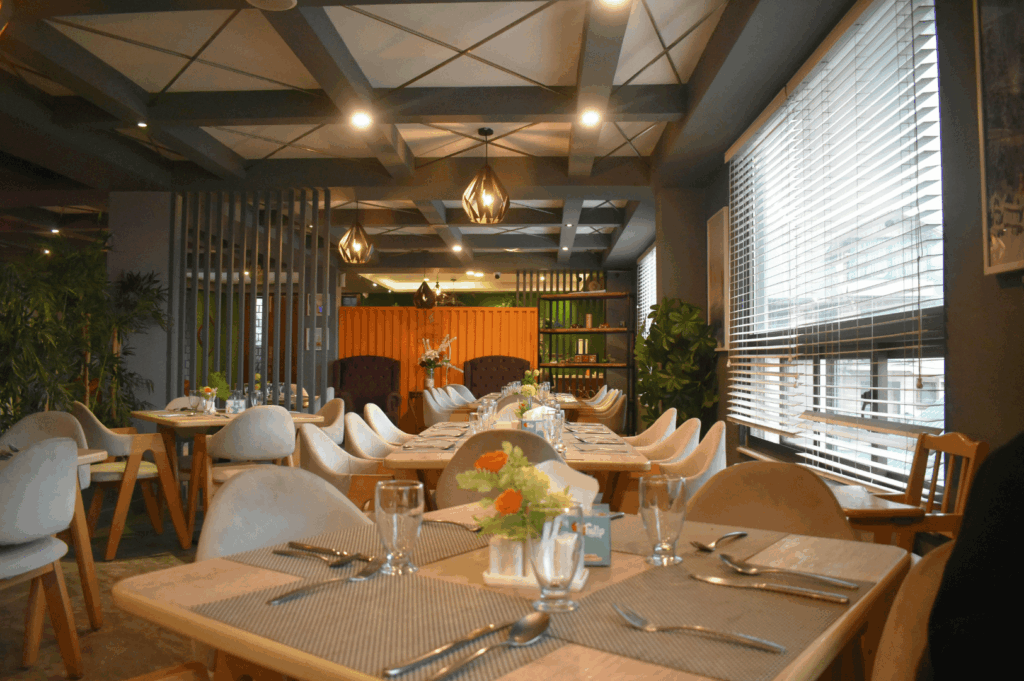
To integrate sustainability into your restaurant design:
- Pursue Certifications: Consider LEED (Leadership in Energy and Environmental Design) or Green Restaurant Association accreditation to formalize your sustainability efforts.
- Find the Right Suppliers: Work with manufacturers specializing in eco friendly materials and sustainable design, and explore partnerships with local farms and green energy providers.
- Get Started Now:
- Conduct an energy audit to identify high-energy-usage equipment and spaces.
- Switch to LED lighting and incorporate more natural light.
- Create a sustainability action plan with your team.
By embracing sustainable restaurant design, you’re not just joining a trend—you’re leading your business and your community into a more sustainable future.
Eco-friendly restaurants that prioritize energy efficiency, sustainable materials, and waste reduction are more cost effective, more desirable, and better positioned for long term success.
Take your first step now: transform your restaurant into a destination where style, sustainability, and unforgettable dining experiences all come together.s, the support for your team, and a central driver of customer satisfaction and business longevity.
